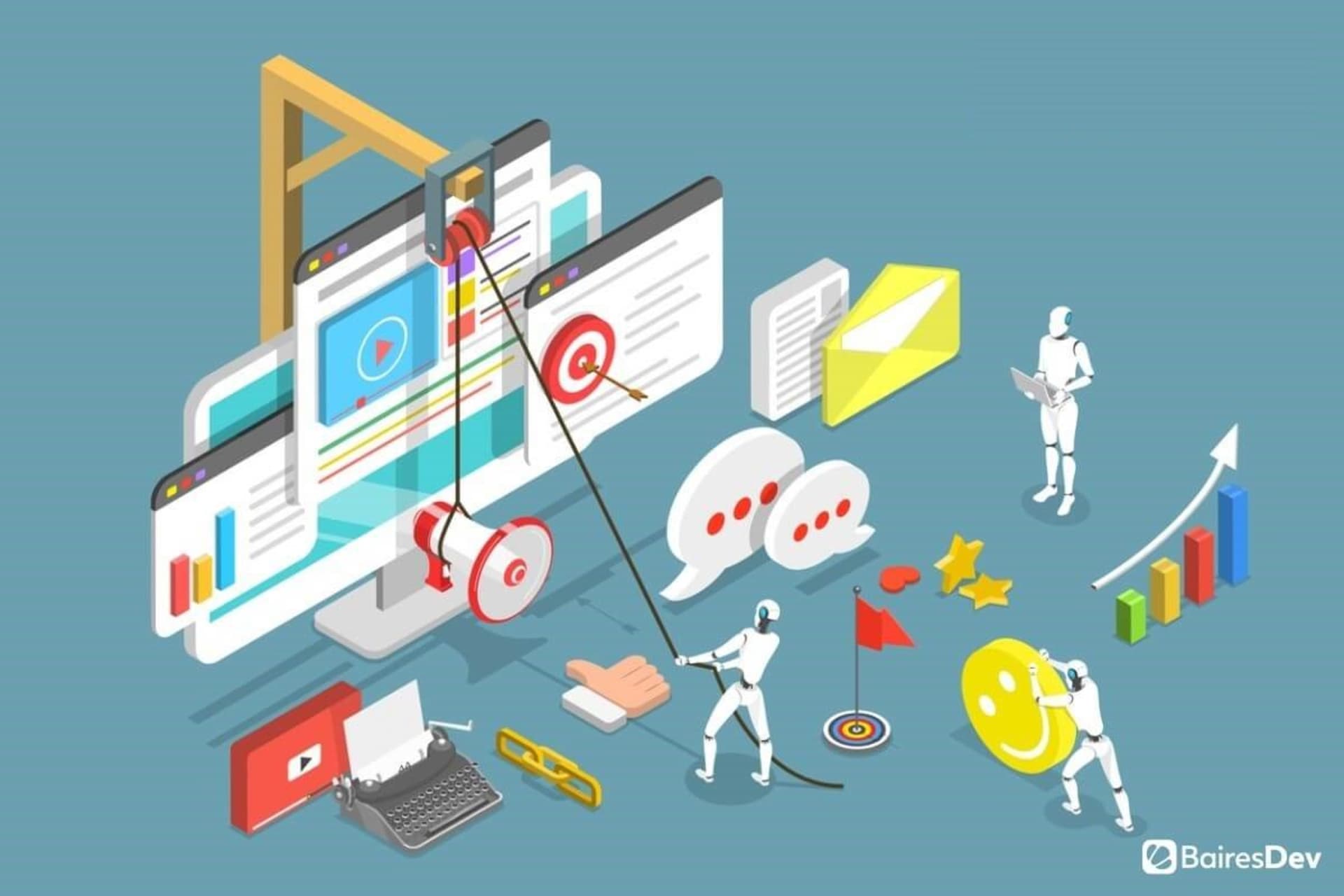Pardot by Salesforce, Hubspot, MailChimp, and Constant Contact. These are all examples of marketing automation platforms that have become household names. Whether or not you realize it, you interact with products and marketing materials generated by these businesses every day.
Today, as they realize the tremendous benefits it offers, more and more organizations are embracing marketing automation. More than half of companies use it, in fact, while 58% of B2B businesses plan to adopt it. Perhaps this is why the market is expected to grow at a CAGR of 17.67% between 2021 and 2027.
So, it’s only natural if you are wondering whether it is the right solution for your business.
Marketing Automation in a Nutshell
Simply put, marketing automation is the use of tools and technologies that automate marketing initiatives, campaigns, and tasks, streamlining them for marketing professionals. Using a suite of tools or a single platform, they can deploy their campaign across different channels, without having to put in the time to do so manually.
Email marketing, customer relationship management, marketing analytics, social media, and workflow automation are just some of the different types of marketing automation. Some platforms encompass all or some of these different features.
These platforms carry a number of additional benefits, along with efficiency. For example, many of them offer detailed marketing analytics on campaign performance. They can also facilitate lead generation.
5 Top Benefits
1. Time Savings
Perhaps the top advantage marketing automation brings to your business is that of considerable time savings. Marketing activities, when performed manually, require an enormous amount of time and effort. When you can automate many of the more rote and repetitive tasks, you will free up hours for the human professionals to focus on those responsibilities that demand a “human touch.”
Marketing automation means a more streamlined, refined system overall. There’s no need for intensive, manual entry of data, and you don’t have to deploy the same campaign across channels — your platform will do this and other activities automatically. Plus, you can schedule campaigns to run ahead of time, meaning you don’t need to wait around to hit send.
2. Data Accrual
Marketing automation platforms and activities generate an enormous amount of actionable data. Every contact who is entered in your system means that much more information — what content they are responding to, as evidenced by their opens, clicks, and sessions, as well as additional preferences.
Moreover, most platforms offer data visualizations, allowing you to see overall trends and insights about individual campaigns’ success and a general view of your efforts over time. If you take advantage of features like A/B testing, you’ll also be able to compare content.
3. Personalization
When you leverage marketing automation, you are encouraging customers to interact with your brand. You can cultivate relationships with them by gathering data on who they are and what they want, as well as nurture those relationships by maintaining contact with them. You can also tailor your messaging and means of communication, offering relevant content that correlates to their interests.
That might be sending push notifications to alert consumers to new products that might appeal to them or deploying emails that correlate to specific groups with a specific interest or demographic, for example.
This, ultimately, helps your business become more profitable, as well as generates greater loyalty.
4. Usability
From a marketer and business perspective, marketing automation platforms tend to be straightforward and easy to use. They rarely require considerable technical knowledge or any coding experience. For the most part, they simply involve adding your content and scheduling or clicking send.
Of course, this varies by the platform itself and how complex you want your campaigns to be. But overall, you’ll find marketing automation tools easy to use.
5. Improved Customer Service
The ultimate goal of your marketing efforts is to improve the customer experience. And when you use marketing automation tools, you will do just that — engage your current audience and keep building it.
Take CRMs, for instance. This is an example of a marketing automation tool with the singular goal of nurturing your relationships with your current or prospective consumers. You will be able to see all your critical consumer data in one place and have insights that allow you to dig deep into what specific individuals or businesses really want, thus enabling you to target your communications accordingly.
Even a chatbot can be considered a marketing automation tool. They require little human intervention and can solve issues, as well as deliver information automatically, helping address the needs of consumers quickly and efficiently.
6 Best Practices
Marketing automation is no one-size-fits-all solution. That said, there are some general practices you should aim to follow if you use it:
- Articulate your goals and objectives before investing in marketing automation software.
- Gather data from your campaigns to assess their ROI and effectiveness.
- Segment your audience to target your campaigns as specifically as possible.
- Wherever you can, use tags to personalize your messaging.
- Test. For example, use A/B testing to assess different content and strategies.
- Don’t leave it all to automation. Your core content needs to be strong on its own — automation should only augment your efforts.
As you grow as a business, you will need to search for ways to improve your efficiency and hone a cohesive strategy that saves you time and money. Marketing is a core function of any business, and embracing marketing automation will help you achieve your goals, no matter what type of work you do. Is this the year you’ll learn what this critical tool can do for you?






